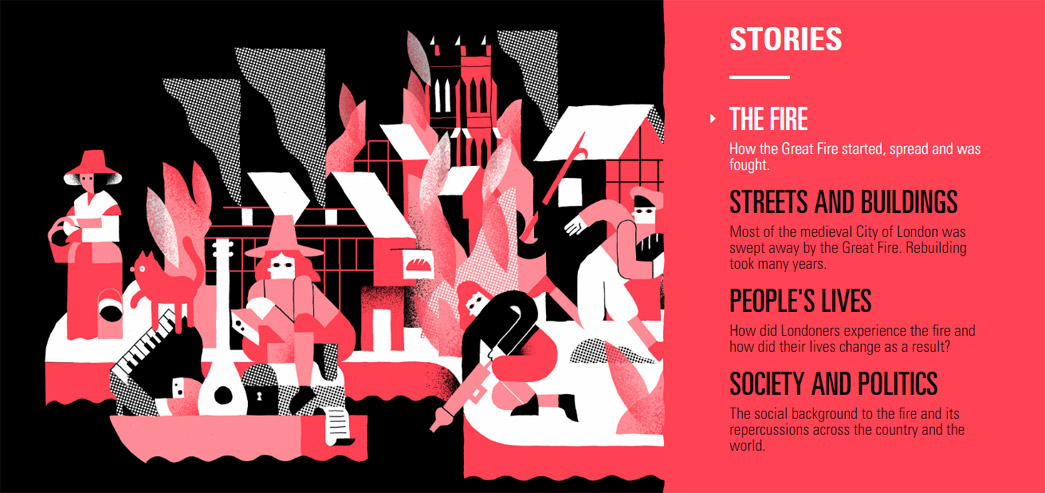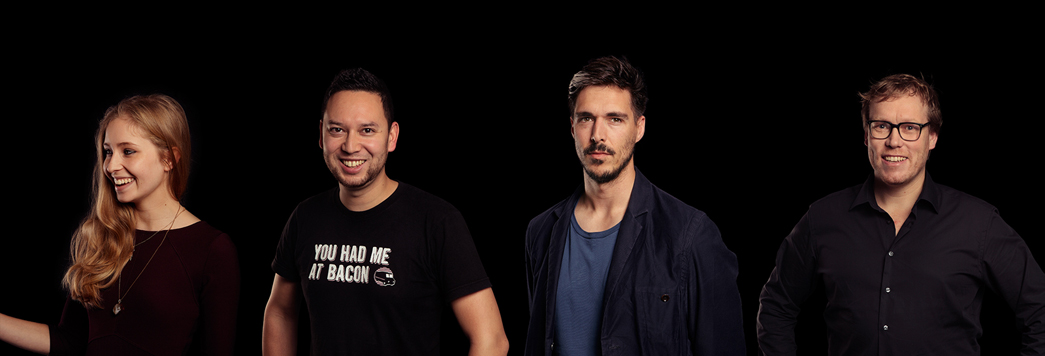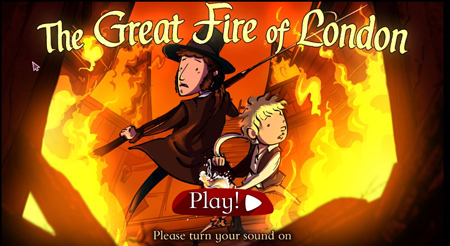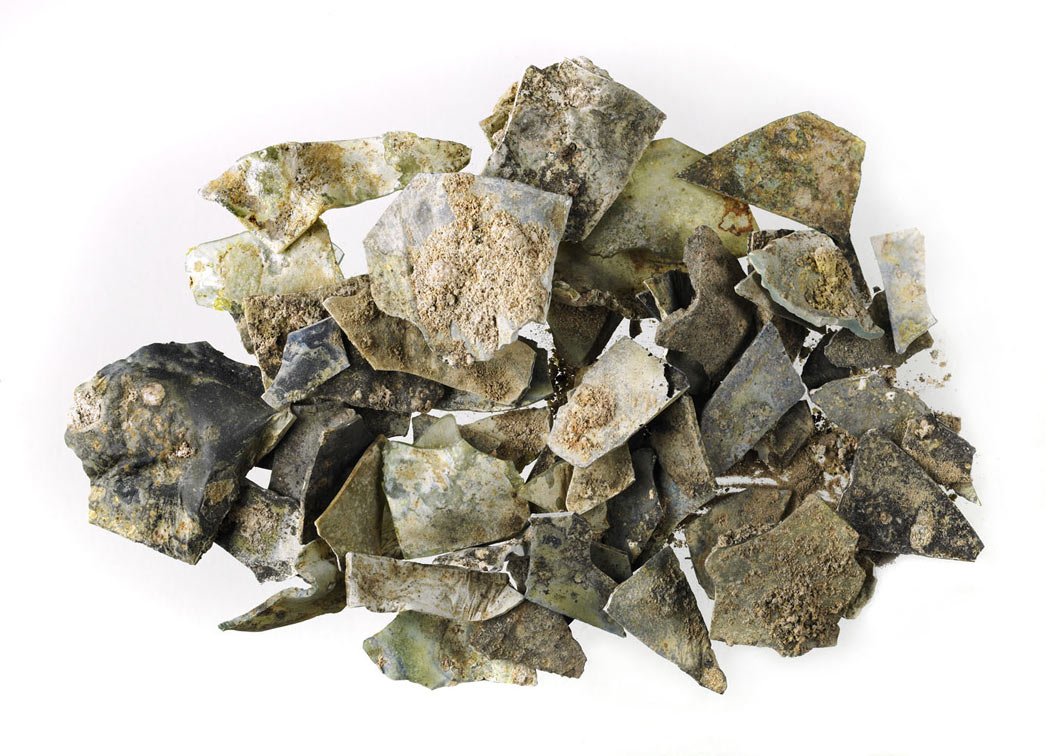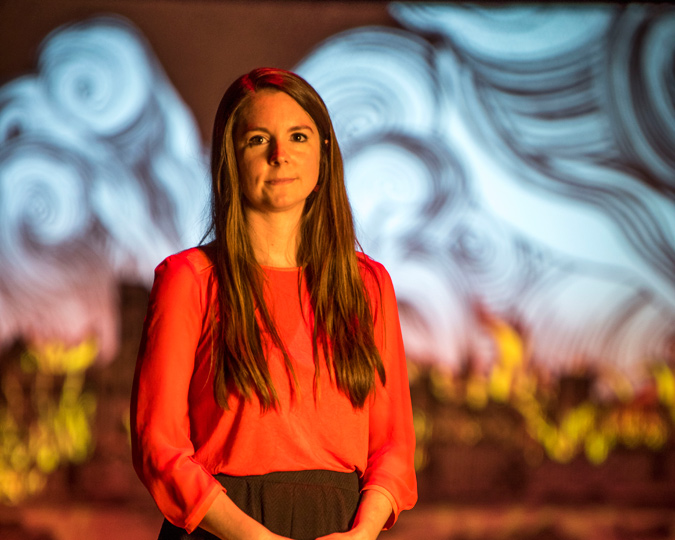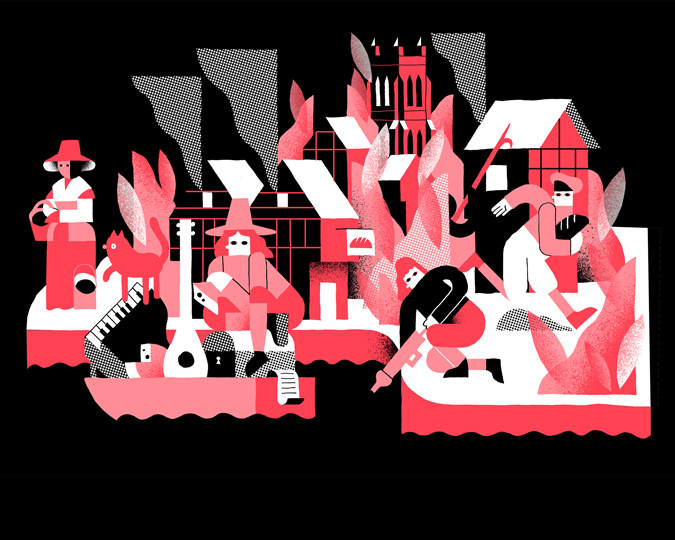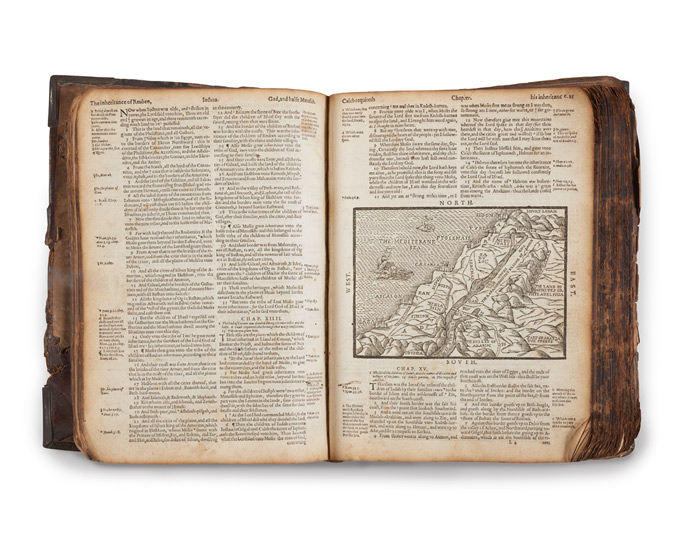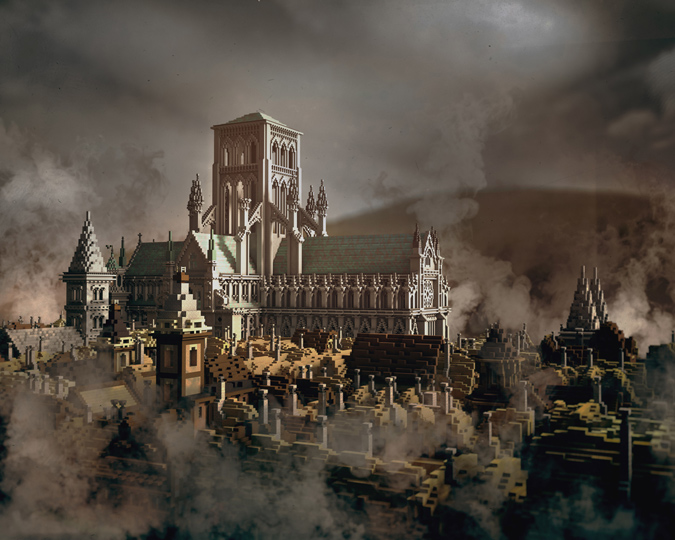In September, we launched our new Great Fire of London website, in partnership with the London Metropolitan Archives, the Monument and the Guildhall Art Gallery. Visitors can experience the gripping story of the fire through an interactive children's game, a Minecraft experience, and the Explore section of the website, which uses historic maps and objects to tell the story of the fire.
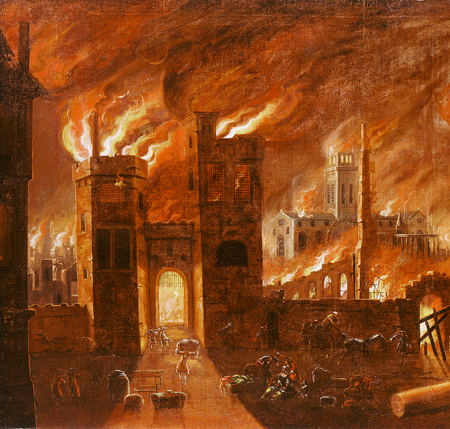
Detail from The Great Fire of London, 1666
From an original by Jan Griffier the Elder; ID no. 27.142
What made you decide to create the new website?
Rhiannon Looseley (Project Lead, Museum of London): September 2016 marked the 350th anniversary of the Great Fire, which offered an opportunity to refresh the hugely popular, but aging interactive game for 5-7 year olds that we published eight years ago. But we wanted to also create an even bigger and better website, not just for children, but for anyone interested in learning more about the fire. Our aim, by working in partnership with other expert heritage organisations across the City of London, was to make this the go-to, authoritative site about the fire for years to come.
The site is the product of the hard work of many different organisations even beyond our partners. We’re very grateful to MOLA (Museum of London Archaeology), who worked on the three historic maps that form the basis of the core of the site, geo-locating and adjusting them to fit over modern-day Google maps. The site also includes our Great Fire 1666 Minecraft experience, built by a team Digital Producer Adam Clarke.
Charlotte Scott (Assistant Director, London Metropolitan Archives): There was a strong feeling within all the City of London institutions that this was a very special piece of the City's history, but the full story wasn’t always fully known. It was our job, as the people lucky enough to work with collections, to share this history during the commemoration year with new and bigger audiences. We also thought it right to work together to produce a website which would go on after 2016, somewhere people can turn to for an authoritative and full story.
How did the Museum of London decide what kind of website to create?
Rhiannon: Originally we’d talked in terms of a ‘comprehensive’ site that showcased all of the fire-related collections of the partner organisations, but this amounted to thousands of objects/pages of documents. Quite apart from this being a huge digitization and cataloguing task to coordinate, audience consultation confirmed our feeling that what users wanted was more of a narrative site which used the partners’ collections to add authority and depth to the gripping story of how the fire started and spread and the enormous effect it had on London.
We looked to our web design agency Fabrique to bring all the various
elements of the site because we knew their previous work with museums such
as the Rijskmuseum and the Van Gogh Museum and were confident that
they could lead us through the tight timescales to a really beautiful and
engaging final website.
Meriel Jeater (Museum of London curator): It was then very difficult to decide which objects from our collection to include. For example, we have over 100 bricks from buildings that burnt down during the fire- we weren’t sure if people would want to individually view every single one! Instead, we picked out the objects that had the strongest stories attached to them, and we wanted the website to tell those stories in the best possible way.
What was the goal when you began to design the site? What did you hope to achieve?
André Bouwman (Creative Director, Fabrique): Our main goal was to create an experience that tells a comprehensive and compelling story about the fire. Not just a linear Wikipedia-inspired website that merely sums up the facts, but a multi-layered story platform where people explore the story in unexpected and unplanned ways. We had so much information and so many objects available that we separated them into four main storylines; The Fire, Society and Politics, Streets & Buildings and Peoples’ Lives. We made it easy for people to choose between the storylines and jump to another whenever they feel like it. This makes it a very personal experience to learn about the fire – you can move at your own pace and discover new facts, objects and theories.
How did you actually go about designing the site?
Rhiannon: The first phase of the project was to commission the cartography work from MOLA, and to have the game re-designed and re-made in HTML5. This was done in record time by digital production studio Fish in a bottle.
Drew Wilkins (Co-founder & Production Director, Fish in a bottle): When recreating an existing piece of content, particularly one as popular as the Great Fire of London game, it’s critical we don’t lose what made it popular in the first place. The original game’s narrative was compelling and delivered a great piece of experiential learning, giving children a first-hand experience of the events surrounding the Great Fire. The original Flash version of the game wasn’t working on mobile, tablets and many desktop browsers. In addition to this the art style, animations and voiceover were a bit dated (a little bit "Dick Van Dyke"), so we set about rebuilding the game, redesigning the characters and scenes, and rerecording the dialogue at higher quality.
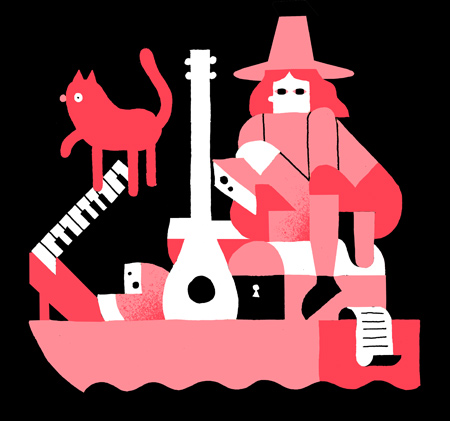
Rhiannon: We did a lot of thinking before Fabrique came on board
about the stories that we most wanted to tell, the collections we wanted to use
and what we wanted people to learn from the site. We proposed an outline
structure and narrative, knowing that Fabrique could pick it up and turn it
into something wonderful.
André: We kicked off the project in London, working closely together with the museum, taking in as much information as possible in a short period of time. Together we defined a clear vision and roadmap for the project, decided on the main functionalities and had a sneak peek at the amazing amount of rich content and the fantastic historical maps that we were going to work with. In the short amount of time we had, those went into a first draft of the design.
The next phase was the most difficult and yet most fun
part of the project. Once you reach that moment when the overall boundaries are
set, the idea makes sense and you have in mind what you want to achieve and how
you are going to get there, you can finally lose yourself in the design
process. From structure to navigation to typography and illustration, we went
all out without losing sight of our main goal: to an authoritative and distinctive
site that tells the story of the fire in different ways for different types of
user. For example, for the visual design, we studied 17th century art, typography and literature. We were specifically drawn to 17th century English woodcuts. They were our main inspiration for the shapes and illustrations.
We built one of our most detailed prototypes ever and tested it amongst visitors in the museum. Slowly but surely the experience started to come together and even now, we are still tweaking and adding to it to make it even better.
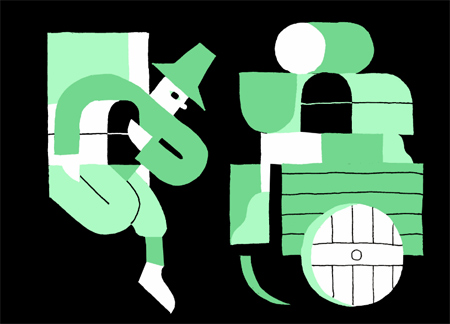
Rhiannon: Once Fabrique had created the skeleton concept, it was back to us to work out the best way to flesh out the narrative around it to create the best experience possible. It’s important to us that the public continue their inherent trust in museums as a source of reliable and high-quality information so we were careful to double- and triple-check all of our content.
Meriel: I also reviewed all the illustrations created by Fabrique, checking them for historical accuracy. For example, I spotted that the first pictures they created of people during the Great Fire had all the men wearing trousers - even though these wouldn’t become common until almost two hundred years later. Fabrique quickly changed them to the historically-accurate breeches.
Charlotte: I supported the Museum of London with information from the London Metropolitan Archives. I worked with my colleagues to choose the best documents from the archives to illustrate the site, then we had to digitise and transcribe them, and help the museum to prioritise them, and give advice on specific stories. One of my colleagues for example knows a great deal about Robert Hooke and his work on the rebuilding on the City. It was fascinating to see how Fabrique tackled the project, I liked their fearlessness.
Do you have a favourite from amongst the objects featured on the new website?
Rhiannon: My favourite is probably the melted window glass which was excavated by archaeologists from the cellar of a shop on Pudding Lane which had burnt down during the fire. The way the glass has buckled, broken and clouded shows how hot the fire got. The object also ties in nicely with the quote from Samuel Pepys's diary on 4 September 1666 where he says that he ‘…took up a piece of glasse in the streete, where much more was, so melted and buckled with the heat of the fire’.
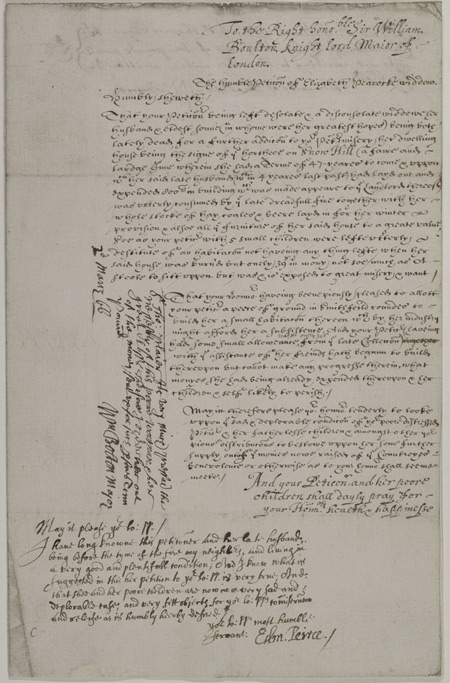
Petition for Elizabeth Peacock
London Metropolitan Archives; ID no. COL/SJ/03/009/006
Charlotte: My favourite is the petition of Elizabeth Peacock, a single mother with 5 children who lost her home and business in the Fire, reminds us this was a horrific time for London and Londoners, and the Great Fire is a serious subject. I would also add in the Hooke Diary, Hooke is a neglected genius who did so much to rebuild London.
Meriel: I would pick the letter from Henry Griffith of London to his friend Henry Griffith of Bethnall, Shropshire. It’s a very interesting and moving account of various aspects of the fire but it’s not by anyone famous, like Samuel Pepys. Henry explains how hard it was to tackle the blaze and how the king and his brother helped to fight the fire in person. He also mentions the rumours that the fire was started deliberately but dismisses them (‘And now that we cry out a plot, a plot, and ‘twas treachery has done this unto us, when alas ‘twas for those personal and national sins that this kingdom is guilty of…’). Finally, he writes about the losses that his friends and relations have suffered in the fire: his cousin Edwards and Mr String ‘have lost all’ and another cousin John Jones has ‘extremely suffered’.
Many such letters must have been written at the time to loved ones who were anxious for news. We are fortunate that this letter has survived to give us an insight into the thoughts and feelings of people who were directly affected by the fire.
So, are you all happy with the results?
André: I believe we have truly created a complete educational experience for all ages with an innovative design, playful illustrations and most importantly, a very interesting story. I'm just very proud of the team for making it happen within the short amount of time and the challenges we were up against. I hope many people will enjoy the story and learn as many new things about one of the most iconic events in British history as we did.
Drew: We’re very proud of the end result. The HTML5 version of the game delivers the same story-driven experience of the original Flash game, but with a full makeover it can be enjoyed by children for years to come.
Rhiannon: I’m very happy with the way the site’s turned out. It was a challenging project in terms of both ambition and resourcing so I’m delighted that we were able to launch such a polished and fulsome site bang on time for the anniversary of the Great Fire starting on 2 September. Of course, like any website, there’s always work to do to keep making it even better so we’ll be continuing with that for a while. Usage so far far outstrips the performance of the previous site and was particularly high, pleasingly, over the anniversary weekend. Analytics suggest that people from all over the world are not only coming to the site, but sticking around and exploring the story which is just what we like to see!
Charlotte: I think the site is great, very fresh, but with a strong narrative, and it retains the much loved Great Fire game which so many people and children have told us they loved over the years. I’m really excited that the archives are so accessible, as they are notoriously difficult to display and explain, although they are packed with interesting information. The website goes a long way to make them accessible to new and wider audiences. Personally, I really enjoyed working with the Museum of London and it would be great if the two bodies could do more direct collaborations in the future.
Check out the Great Fire of London website to explore the story of the fire for yourself, or visit our Fire! Fire! exhibition at the Museum of London.








